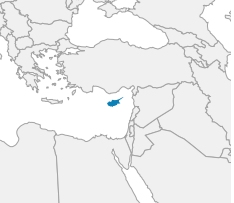Home / Fact sheets / Cyprus / Population fact sheet
The World Bank (2023)
World Health Organization (2021)
UNDP Human Development Report (2022)
World Health Organization (2019)
GLOBOCAN (2022)
Check also the following factsheets: Breast, Cervical, Colorectal
Country fact sheet: Cyprus
| - Total population: | 1 260 138 |
| - Female population: | 628 990 |
| - Male population: | 631 148 |
Health Expenditure
| - Total per capita (US$): | 2 989.7 |
| - Out-of-pocket (% of total expenditure on health): | 9.9 |
| - UHC Service Coverage Index: | 81 |
Human Development Index
| - HDI: | 0.907 |
| - Category: | Very high |
Geography
 |
Life Expectancy at Birth
| - Total population (years): | 83.1 |
| - Female population (years): | 85.1 |
| - Male population (years): | 81.1 |
Cancer Burden
| - Overall cancer incidence (rate per 100 000 persons per year): | 292.3 |
| - Overall cancer mortality (rate per 100 000 persons per year): | 111.5 |
| - Most common cancer site by incidence for females (rate per 100 000 persons per year): | Breast (104.8) |
| - Most common cancer site by mortality for females (rate per 100 000 persons per year): | Breast (18.6) |
| - Most common cancer site by incidence for males (rate per 100 000 persons per year): | Prostate (60.9) |
| - Most common cancer site by mortality for males (rate per 100 000 persons per year): | Lung (35.5) |
| - GLOBOCAN 2020 population fact sheet |
Check also the following factsheets: Breast, Cervical, Colorectal

